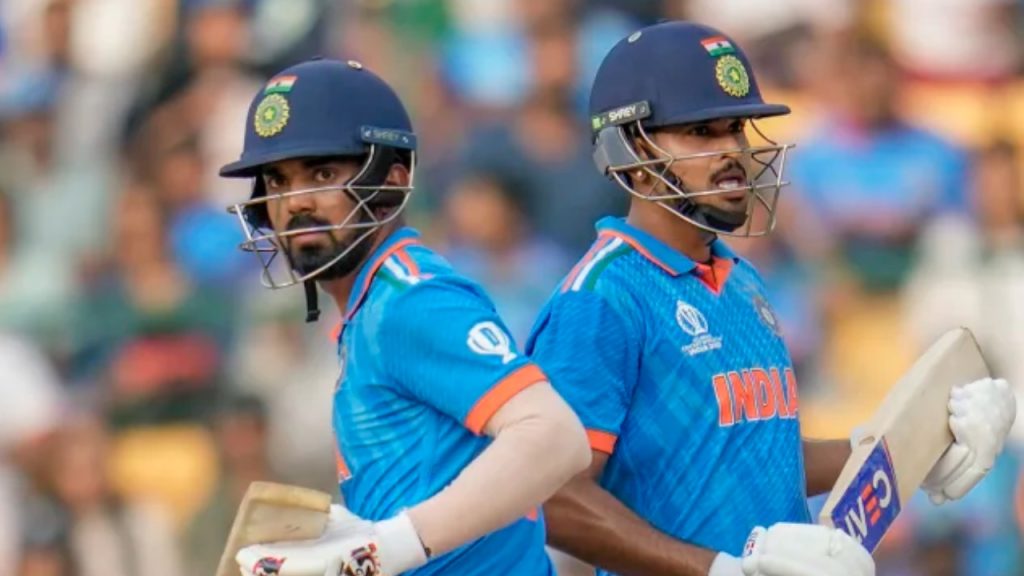In the world of Indian cricket, debates about who is the better player are as common as the game itself. The comparison between KL Rahul and Shreyas Iyer in One Day Internationals (ODIs) is particularly intriguing due to their impressive stats and differing roles within the team. Let’s explore their numbers and performances to see who stands out.
KL Rahul
KL Rahul has been a versatile asset for the Indian team, known not just for his batting but also for his wicket-keeping skills. In ODIs, Rahul has appeared in 77 matches, stepping up to bat in 72 innings, with 14 not outs. His total run tally stands at 2851, with his highest score being 112. His average of 49.15 is a testament to his consistency, while a strike rate of 87.56 shows he balances risk with stability. Rahul has seven centuries and eighteen fifties under his belt, which speaks to his ability to convert starts into big scores. He has hit 226 fours and 61 sixes, showing his flair in boundary scoring. His role as a keeper is highlighted by 63 catches and 5 stumpings, adding another layer to his contribution to the team.
Shreyas Iyer
Shreyas Iyer, on the other hand, has carved out a niche as a top-order batsman. In 62 ODIs, he has batted in 57 innings, with 6 not outs, accumulating 2421 runs. His highest score of 128* reflects his capability to anchor innings and play match-winning knocks. Iyer’s average of 47.47 is impressive, but it’s his strike rate of 101.21 that stands out, indicating a more aggressive approach compared to Rahul. He has managed five centuries and eighteen fifties, matching Rahul’s half-century count but with fewer matches played. His boundary hitting is very similar, with 226 fours and 62 sixes, suggesting an equal or slightly more aggressive intent at the crease. Iyer’s fielding contribution includes 24 catches, though he doesn’t keep wickets.
Statistical Analysis
When comparing these two, KL Rahul has a higher average, which could be attributed to his ability to bat in various positions and stabilize innings. His role as a wicket-keeper adds significant value, making him a more versatile player. However, Shreyas Iyer’s higher strike rate is crucial in today’s ODI format, where quick scoring can change the game’s momentum. Iyer’s numbers in fewer matches suggest he has been impactful in a shorter span, which is vital in the context of team selection for high-pressure games.
The Role Factor
Rahul’s flexibility to bat anywhere from the top to the middle order and keep wickets when needed gives him a unique advantage. This versatility means he can adapt to the team’s needs, whether it’s opening the innings, consolidating in the middle, or finishing an innings. However, his primary batting position has often been in the middle, where he has proven to be a significant run-scorer.
Iyer, conversely, has been more of a fixed asset in the top order, where his role is to set the tempo early or consolidate after an early collapse. His aggressive play complements the powerplay overs strategy, making him a pivotal part of India’s ODI batting lineup.
Consistency vs. Impact
Rahul’s stats over more matches show a consistent performer, whose contributions are vital in both building and finishing innings. His average, though slightly higher than Iyer’s, does not tell the whole story, as averages can sometimes be inflated by not outs or specific roles within the team.
Iyer, with fewer matches, has managed to keep his average close to Rahul’s while playing a more high-risk, high-reward game. His impact, especially in terms of run rate, might be more game-changing in scenarios where quick scoring is needed.
Who Has Better Stats?
Determining who has “better” stats isn’t straightforward due to their different roles and the contexts in which they play. If one looks at pure batting numbers, Rahul’s higher average might give him a slight edge. However, Iyer’s strike rate and his ability to score quickly in the powerplay or rebuild after an early wobble are equally, if not more, valuable in modern ODI cricket.
In Summary
Both players bring something unique to the table. Rahul’s versatility and consistency, combined with his keeping skills, make him invaluable. Iyer’s dynamic and aggressive batting style adds a different dimension to the team’s strategy. Therefore, rather than declaring one as having outright better stats, it’s more apt to say they complement each other in India’s ODI setup, each excelling in their domain.

